Little Bittern Ixobrychus minutus
Rare. Western Europe.
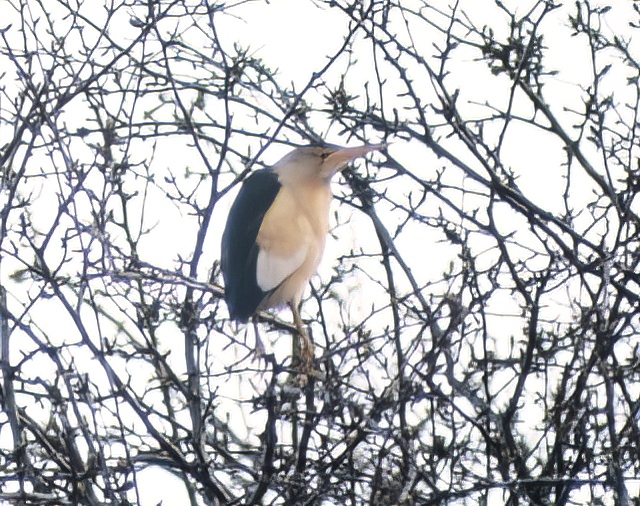
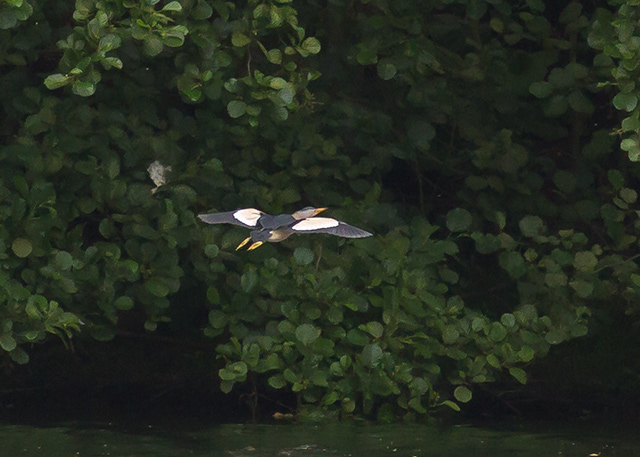
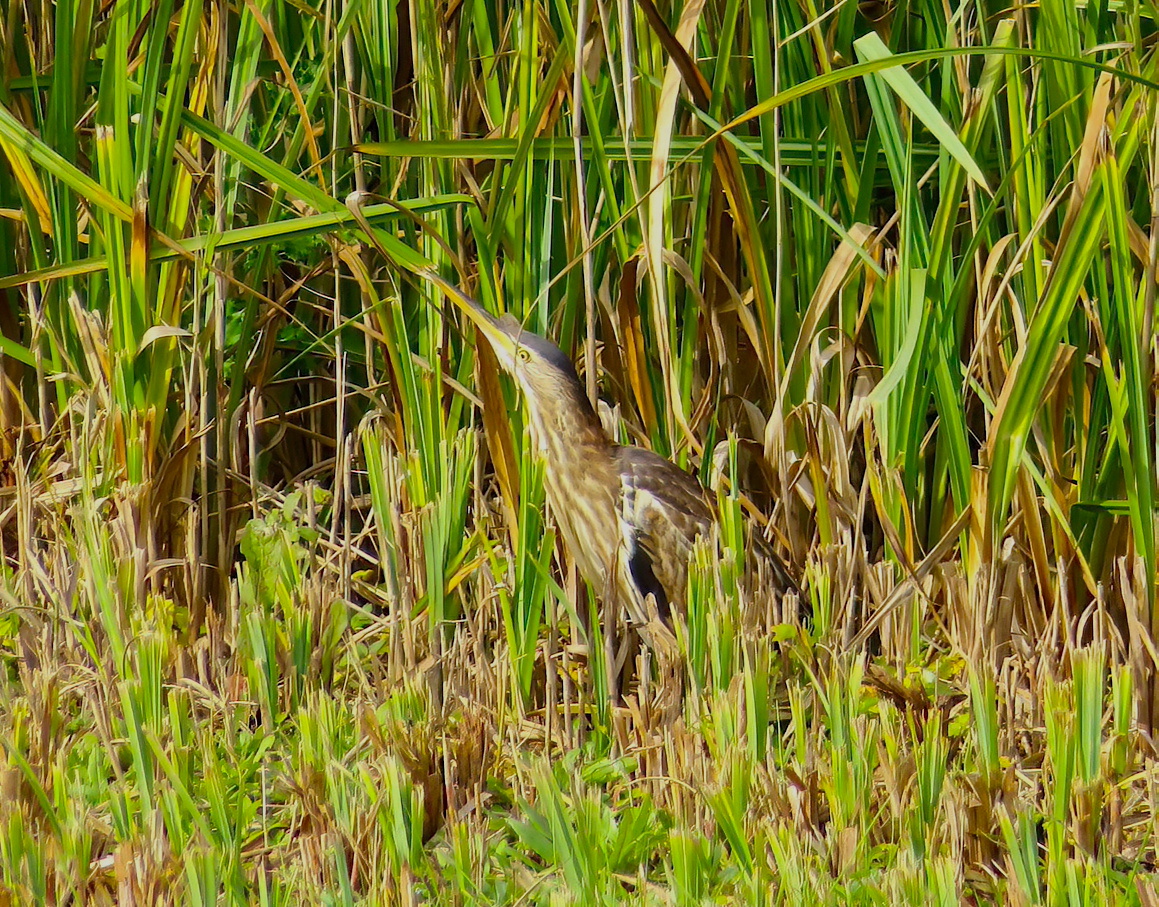
Little Bitterns: left, East Halton Pits April 19th-29th 1978 (Graham Catley); centre, Kirkby on Bain GP (Colin Scott); right,1CY+ female Huttoft Pit (Dave Miller).
The first Lincolnshire record was of a ‘fine mature male’ in the collection of Mr Boulton (Cordeaux 1872). The location of where it was shot is unknown but it was said to have been shot in the county ‘some years since’ at the date of publication, and so we can assume that it pre-dated an adult male that was shot by a gamekeeper near Gainsborough on 20th May 1870 (which Cordeaux described as a recent appearance). The date of the first twentieth century record also is uncertain and there was then a long gap until the next in 1953, but the species has been found more frequently since then. Interestingly, the LNU Transactions (vol 3, December 1954) recorded that the immature bird at Goxhill in August 1953 was first flushed from a reed-bed and eventually, while doing its ‘freezing’ act, was caught, ringed and photographed (although the latter has not survived).
This colourful small heron has almost as many British records before 1949 (247) as after, up to 2020 (281). Presumably like many of our more colourful rare birds it offered an irresistible target to the gunmen of the day. It averages around 3-4 records per year and has occasionally bred. The first occasion was in 1984 in Yorkshire followed by a series of records from the south-west, the first in 2010 when breeding was confirmed at the Ham Wall reserve in Somerset. The latest publication on rare breeding birds in Britain in 2017 (Holling et al 2019) reported 1-6 pairs at four sites, three in the south-west and one in northern England.
The chart below, showing seasonal occurrence, includes all records except the two early ones with no precise date. May and early June is clearly the most likely time to encounter a Little Bittern, and it is worth pointing out that all of the spring records involved males. The two in August and one in October were juvenile birds. It remains a rare visitor, though, and the total number of records is currently 14.
| Site | First date | Last date | Count | Notes |
| Gainsborough area | 20/05/1870 | - | 1 | Adult male, shot |
| Ludford | Undated, early 1900s | - | 1 | Male, shot |
| Goxhill Marsh | 12/08/1953 | 16/08/1953 | 1 | Juvenile, trapped and ringed |
| Wolla Bank Pit | 21/05/1964 | 26/05/1964 | 1 | Male |
| Burton GP | 13/05/1970 | - | 1 | Male |
| Birchwood, Lincoln | 26/08/1976 | 27/08/1976 | 1 | Juvenile, found dead on 27th August |
| Barton Pits | 23/06/1977 | - | 1 | Male |
| East Halton Pits | 19/04/1978 | 29/04/1978 | 1 | Male |
| Saltfleetby-Theddlethorpe NNR | 11/05/1994 | 13/05/1994 | 1 | Male |
| Arnold's Meadow, Spalding | 12/05/2003 | 13/05/2003 | 1 | Male |
| Messingham SQ | 01/06/2004 | 02/06/2004 | 1 | Male |
| Kirkby GP | 28/06/2015 | - | 1 | Male; also seen Suffolk and Yorks. |
| Huttoft Pit LWT Reserve | 07/10/2020 | - | 1 | 1CY+ female |
| Europarc, Grimsby | 26/05/2022 | - | 1 | Immature male (?) |
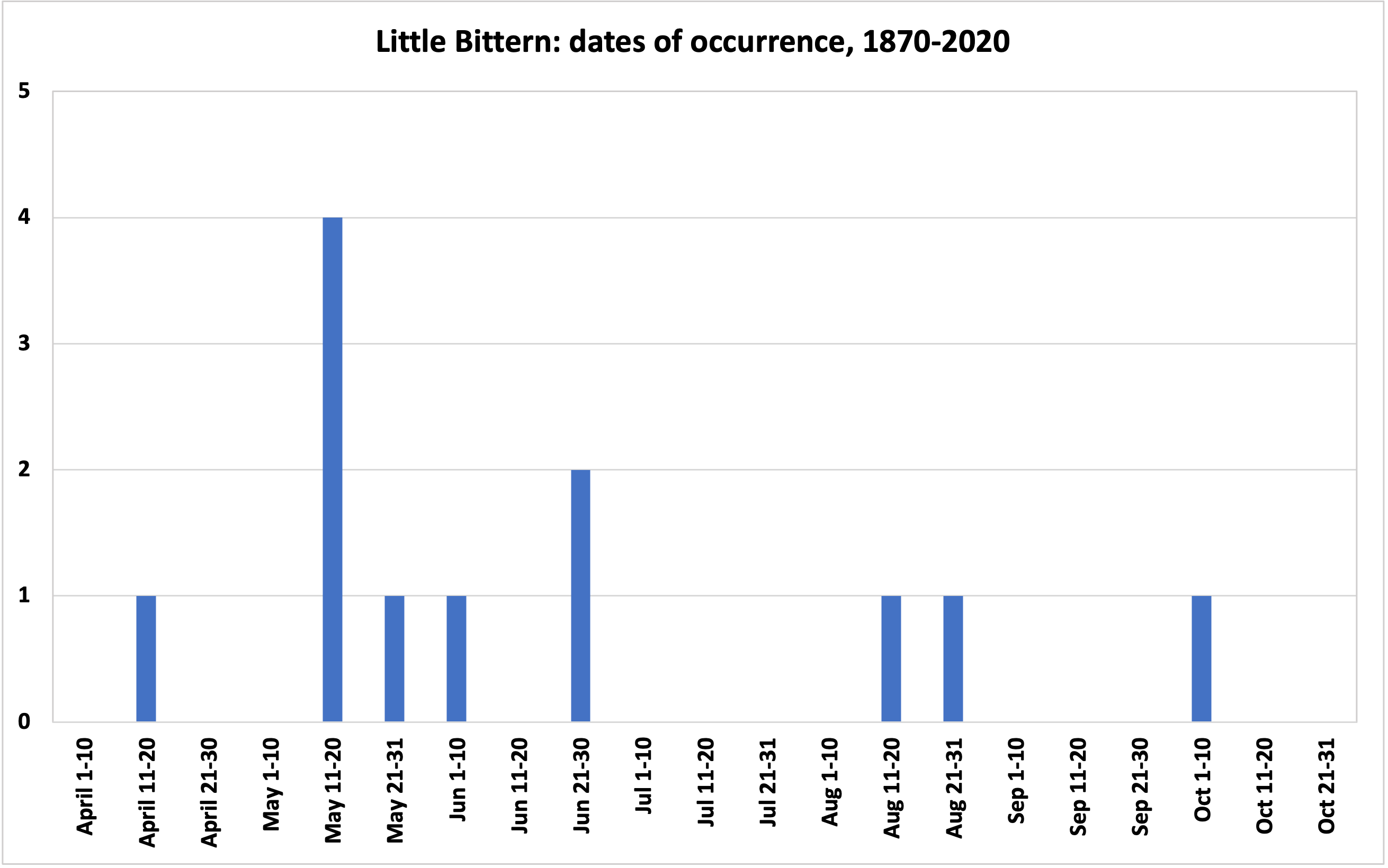
Finder’s report: Little Bittern at Chapel Pits, May 21st, 1964.
by G. Bundy, A. D. Townsend, and K. Atkin
Note: This was the fourth county record; the account below is from the original BBRC submission written by Graham Bundy. The BBRC report for 1964 noted that the eleven records that year suggesedt a remarkable spring 'invasion', particularly taking into account the fact that this is a shy and skulking bird, very easily missed. There were almost as many in Britain and Ireland in 1964 as the total of 14 during 1958-63, of which six occurred in 1958. They also postulated, somewhat presciently, that the possibility of breeding should not be overlooked since the species nests in suitable areas of most Continental countries bordering the English Channel and southern North Sea.
Circumstances
An adult male example of Little Bittern, Ixobrychus minutus, was seen by three observers (GB, DT and KA) on May 26th, 1964, at Chapel Pits near the Lincolnshire coast. It was first seen by A. Sykes on May 21st with A. E. Smith, and on several dates in between by B. Wilkinson.
On May 26th it was seen well by us at ranges down to 15 yd. with x40 and x60 telescopes in a good light between 19.30 and 20.40 hr. The bird frequented a narrow fringe of reeds surrounding shallow fresh water pools and was seen well both at rest on reed stems and in flight. It was not difficult to flush and when rising it did so with some apparent effort but flew lightly when up, rather direct with fairly quick wing beats, rather recalling Lapwing in the latter respect. Usually it flew low, a few feet over the reeds or some ten feet over the water and seldom flew more than about fifty yards before pitching again in the reeds. Once it was seen to adopt the characteristic ‘stick’ camouflage posture when approached closely by ADT and KA, with the neck stretched and bill pointing vertically skywards. On the reeds it moved easily, clambering from stem to stem like the Rallidae rather than Ardeidae, and was once seen to slide down a reed stem it was holding with both feet until it was just over the water surface. On one occasion it was also seen to hold two reeds, one in each large foot, with legs almost horizontal rather like Bearded Tit, Panurus biarmicus. It generally had a hunched-up, neckless appearance, but when nervous it was seen to stretch its thick-looking neck a little, as in the aforementioned defensive posture.
Description
General appearance - Apart from the neck and relatively long, broad-based bill, it was probably about the size of a Moorhen, Gallinula chloropus, with broad round wings. The thick feathers on the breast formed a ruff, being rather elongated and were seen on one occasion to overhang those on the belly.
Bill - appeared rather large for so small a bird, looking straw-coloured with an orange area at the base extending to the lores and pale eye.
Legs - were yellowish-olive, possibly more olive on the feet but certainly more yellow than green, a feature that was conspicuous in flight when the feet projected beyond the short black tail.
Head - the crown was black, the black not extending as low as the eye and possibly greyer on the forehead, the throat was pale buff. Cheeks looked a shade greyer from the rest of the neck, which was buff, while the black crown looked at first to be ‘separated’ from the black of the mantle. On the few occasions when the neck was extended a shadowy grey line along the centre of the nape became visible.
Underparts - vent was pale buff, the rest of the underparts buff.
Upperparts - glossy-black, except for large, buff, oval patches on the forewing easily noticeable on the closed wing but most striking in flight and so much so that the colour of the underwing was not noticed.
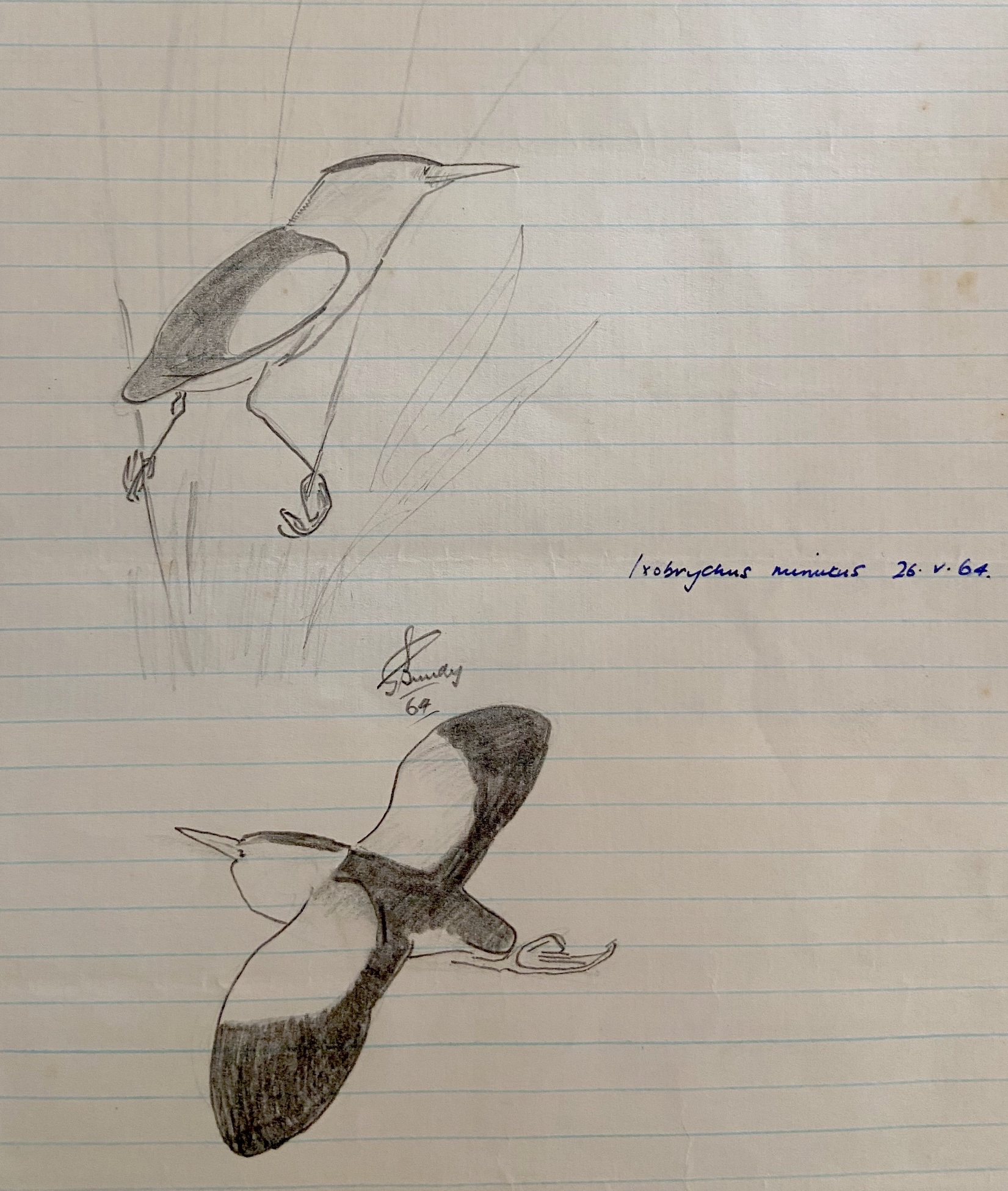
Original sketches of Little Bittern, Chapel Pits, May 1964 from the RC submission, by Graham Bundy.
(Account prepared October 2017; updated with reference to the new Birds of Lincolnshire (2021), September 2022)

